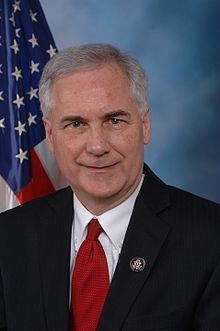Washington, DC…The House Natural Resources Committee today voted to pass H.R. 1349 by Congressman Tom McClintock. The bill would restore the original intent of the Wilderness Act to allow bicycles and other forms of human-powered locomotion in wilderness areas at the discretion of local land managers. Bicycles were originally permitted in wilderness areas from the time Congress enacted the Wilderness Act until 1977 when federal bureaucrats began adopting blanket prohibitions against their use, closing Wilderness areas that are now equivalent to the entire land area of California.

One of the principal objectives McClintock has set as Chairman of the Sub-committee on Federal Lands is to restore public access to the public lands. The bill would restore to federal land managers the option to permit non-motorized mountain bikes, adaptive cycles, strollers and game-carts in Wilderness areas where their use is compatible with the environment, trail conditions and existing uses.
The measure is supported by the Sustainable Trails Coalition and was adopted by a vote of 22-18. It now goes to the House floor.
Congressman McClintock delivered remarks in support of the legislation at the Natural Resources committee hearing:
Mr. Chairman:
Thank you for scheduling my bill, H.R. 1349 for markup. This bill was brought to me by the Sustainable Trails Coalition and advances one of the principal objectives of the Federal Lands Sub-Committee: to restore public access to our public lands.
Specifically, this bill will restore the original intent of the Wilderness Act to allow bicycles in wilderness areas. People who enjoy mountain biking have just as much right to use the public trails as those who enjoy hiking, packing or horseback riding, and our wilderness areas were never intended by Congress to prohibit human-powered mountain bikes.
In fact, a year after he signed the Wilderness Act of 1964, Lyndon Johnson said, “The forgotten outdoorsmen of today are those who like to walk, hike, ride horseback or bicycle. For them we must have trails as well as highways.”
When the House considered the Wilderness Act in June of 1964, the record is clear that its framers intended that the term “mechanical transport” be applied to non-human-powered vehicles like motorcycles – not human-powered devices like bicycles. The Forest Service built this understanding into its original implementing regulations by explicitly allowing all forms of human-powered travel in Wilderness areas.
Bicycles were allowed in wilderness areas from the inception of the Act in 1964 until 1977, when the Forest Service reinterpreted the act to ban them. This met with a stern rebuke from Senator Frank Church, one of the key sponsors of the Wilderness Act, who protested that “the agencies are applying provisions of the Wilderness Act too strictly and misconstruing the intent of Congress as to how these areas should be managed.”
In 1980, Congress explicitly listed bicycling as a permissible use when it established the Rattlesnake Wilderness in Montana, and the Forest Service then rewrote its regulation for that area to allow bicycles unless the local forest manager banned them. In fact, Congress, which has sole constitutional authority over the public lands, has never voted to ban bicycle use in Wilderness areas, and its consistent precedent has been to allow them.
Many scientific studies have concluded that mountain bikes cause no more environmental wear and tear than hiking or horseback riding. A 1994 study by Wilson and Seney at Montana State University found that tires caused less erosion than hiking and horseback riding. A study at the University of Tasmania, Australia made similar findings.
Bicycles peacefully co-exist with backpacking, hiking, horseback riding and packing on any other public lands – and they did for many years in Wilderness areas. It is ludicrous to suggest that they are only incompatible in Wilderness areas – and then only since 1977.
A continuing maintenance problem in Wilderness areas is underutilized trails that disappear with disuse. Restoring bicycle access to our wilderness areas means that fewer trails will disappear over time.
In addition, trails maintenance is significantly hampered by the current ban on wheelbarrows – H.R. 1349 specifically allows them.
There has been a lot of misinformation over the effect of this bill. It only removes the current blanket prohibition against bicycles and other forms of human-powered locomotion established by bureaucratic regulation.
Let me make this very clear: It in no way interferes with the discretion provided in other regulations and laws that gives land managers the ability to close or restrict the use of trails according to site-specific conditions. These agencies have always had authority for example, to prohibit access if a trail is damaged or is incompatible with other uses, and that authority is undisturbed by this law.
We set aside our public lands, in the words of the original Yosemite Charter, for “public use, resort and recreation.” This bill restores this principle for America’s mountain bikers on our public lands.
# # #


